Researchers learn use of equipment for improved phenotyping
By Wandera Ojanji/CIMMYT
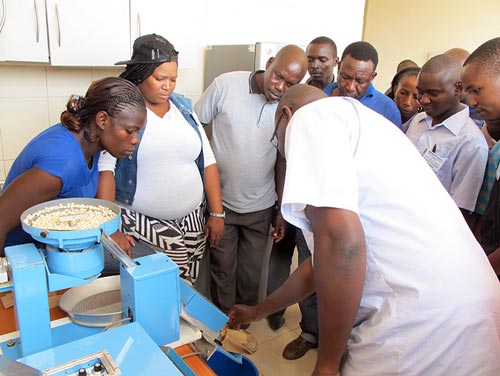
Amini Mataka, a research officer for CIMMYT’s Southern Africa Regional Office in Zimbabwe, was one of many Water Efficient Maize for Africa (WEMA) scientists and technicians who experienced difficulty using data generation and processing equipment.
But after attending the “Towards Quality Data through Effective and Efficient Use of Equipment in WEMA” training course held in Nairobi, Kenya, on 15-22 March, this is no longer the case. “I can now confidently and competently use the Motorola Scanner, make it compatible with computers and use Fieldbook to analyze data and prepare nurseries and trials,” Mataka said.
According to Stephen Mugo, CIMMYT Global Maize Program principal scientist and CIMMYT-WEMA team leader, these difficulties encouraged WEMA to train 28 scientists and technicians from CIMMYT and national agricultural research systems from the five WEMA countries – Kenya, Mozambique, South Africa, Tanzania and Uganda. The training provided participants with skills in the preparation of nurseries and trial design and seed preparation using Fieldbook; the printing of seed packet and field labels in Fieldbook; the basics of data collection using equipment and data analysis using appropriate software; and the use and care of computers, printers, seed counters, threshers and data collection equipment.
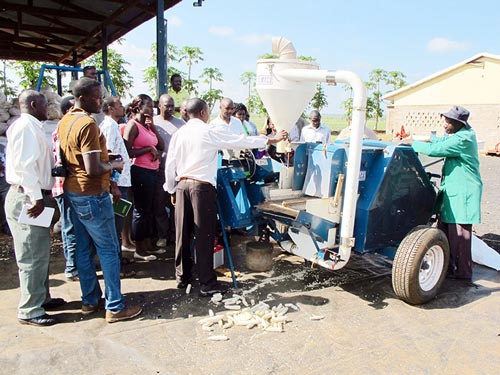
Caroline Thatelo, senior research technician for the Agricultural Research Council-South Africa, learned how to use Fieldbook, a tool developed by CIMMYT maize breeders for managing experiments and data analysis using the open-source data analysis software “R.” “We had problems using Fieldbook when we started,” Thatelo said. “But the practical demonstrations we have gone through have now made me perfect in the use of Fieldbook. I can now create an inventory, a seed increase nursery, a nursery to form single crosses, a stock list, consolidate inventories, generate trials and analyze data for single- and multi-location sites using Fieldbook.”
To some, like Gabriel Ambani, senior technician at the Kenya Agricultural Research Institute (KARI)-Kakamega, Kenya, the training was an eye-opener. “Before this training, I had no hands-on experience on the use of most of the equipment we were trained on, particularly the Motorola Scanner, label printers and bulk sheller,” he said. “I now have increased competence and am looking forward to applying my gained knowledge and skills to effectively use the equipment.”
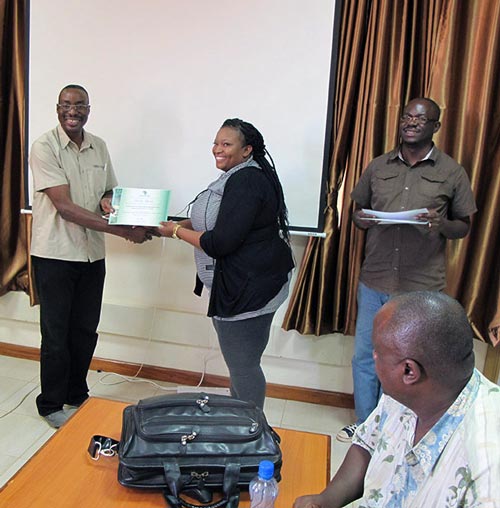
Sylvester Oikeh, WEMA project manager, called on the participants to put their new skills into use. “I want to see improvements in data collection and analysis. Do not be afraid to use the equipment and Fieldbook,” he said. “You are bound to make mistakes. But through the mistakes, you will figure out the right way to operate the equipment and use Fieldbook. You will get it right after several attempts.”
Several CIMMYT scientists and technicians helped organize and facilitate the workshop, including breeders Stephen Mugo and Yoseph Beyene; technicians Andrew Chavangi, John Gakunga and Collins Juma; and Joel Mbithi, CIMMYT-Kiboko farm manager. WEMA Phase II is funded by the Bill & Melinda Gates Foundation, the United States Agency for International Development-Feed the Future initiative and the Howard G. Buffett Foundation.
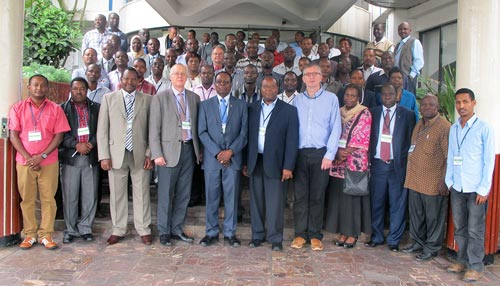
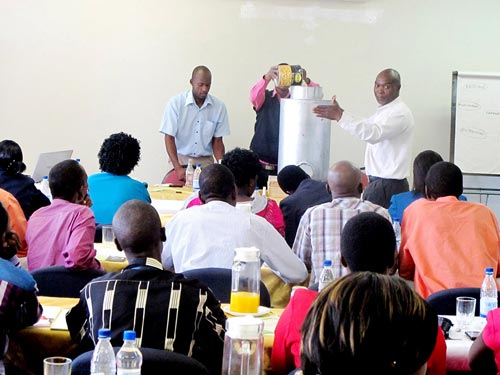
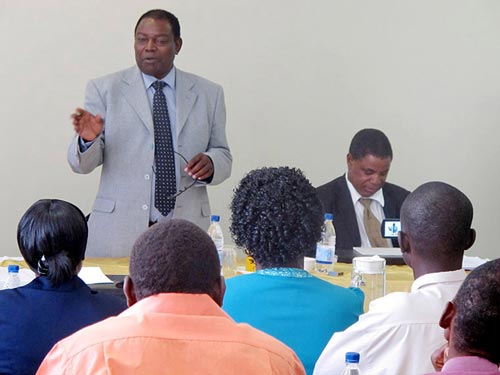
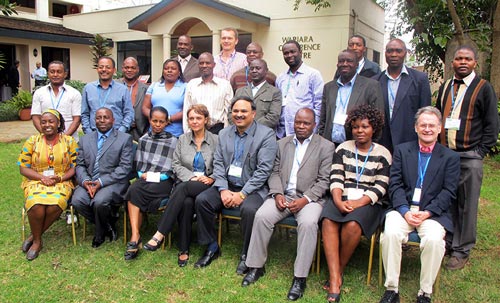
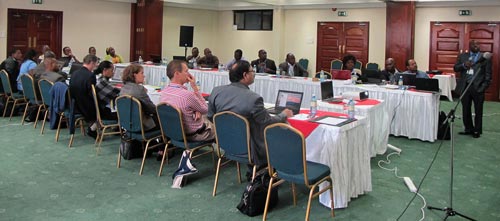
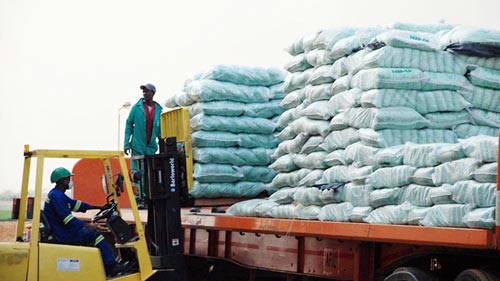 To achieve food security, smallholder farmers in Southern Africa require access to improved seed and inputs for higher yields. “Seed is one of the key movers in agricultural development,” says John MacRobert, New Seed Initiative for Maize in Southern Africa (NSIMA) leader, indicating the importance of going beyond developing improved seed varieties to encompass their dissemination, promotion, and adoption in developing strategies around seed development. These issues, together with NSIMA’s to date progress (the project is in its third phase) and strategies for the next phase, were discussed at a meeting in Lusaka, Zambia, during 7-9 August 2013. About 50 participants from institutions collaborating on the project led by CIMMYT and funded by the Swiss Agency for Development and Cooperation (
To achieve food security, smallholder farmers in Southern Africa require access to improved seed and inputs for higher yields. “Seed is one of the key movers in agricultural development,” says John MacRobert, New Seed Initiative for Maize in Southern Africa (NSIMA) leader, indicating the importance of going beyond developing improved seed varieties to encompass their dissemination, promotion, and adoption in developing strategies around seed development. These issues, together with NSIMA’s to date progress (the project is in its third phase) and strategies for the next phase, were discussed at a meeting in Lusaka, Zambia, during 7-9 August 2013. About 50 participants from institutions collaborating on the project led by CIMMYT and funded by the Swiss Agency for Development and Cooperation (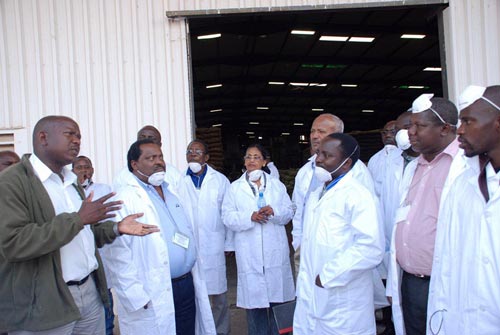 But do smallholder farmers have access to the new seeds, technologies, and information? The answer is often no. “Integrating stress tolerant maize and legumes, such as pigeon peas, beans, and cowpeas, leads to sustainable production systems. We need effective seed road maps to enhance access and availability of improved maize and legume seeds,” CIMMYT regional director for Southern Africa Mulugetta Mekuria said, giving an example of one such gap in the system.
But do smallholder farmers have access to the new seeds, technologies, and information? The answer is often no. “Integrating stress tolerant maize and legumes, such as pigeon peas, beans, and cowpeas, leads to sustainable production systems. We need effective seed road maps to enhance access and availability of improved maize and legume seeds,” CIMMYT regional director for Southern Africa Mulugetta Mekuria said, giving an example of one such gap in the system.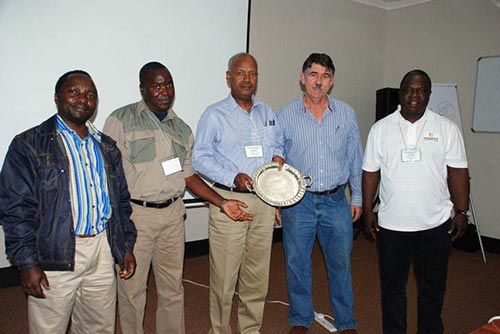 “Private sector players steer away from smallholders viewing them as high risk because of their poor infrastructure, lack of credit, and land tenure, while governments may not view them as a viable investment,” Jenrich summarized the lack of interest in smallholders’ problems. Zaka Superseeds proves them wrong; cooperating with smallholders can, in fact, be beneficial for seed companies, as they can work more closely with the community consuming their seed. Zaka, for example, is removing a product from its selection after consultations with the community during which they found out the discussed maize variety has a long maturity period and is thus undesirable.
“Private sector players steer away from smallholders viewing them as high risk because of their poor infrastructure, lack of credit, and land tenure, while governments may not view them as a viable investment,” Jenrich summarized the lack of interest in smallholders’ problems. Zaka Superseeds proves them wrong; cooperating with smallholders can, in fact, be beneficial for seed companies, as they can work more closely with the community consuming their seed. Zaka, for example, is removing a product from its selection after consultations with the community during which they found out the discussed maize variety has a long maturity period and is thus undesirable.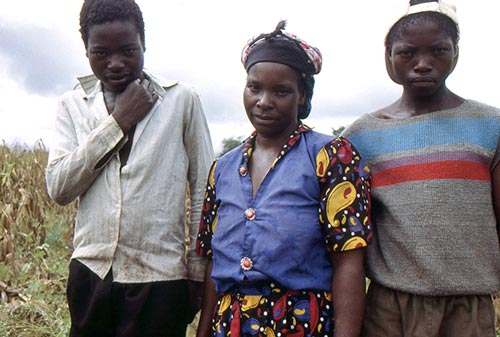 “Maize production is likely to suffer the most due to climate change compared to other crops in Southern Africa,” said CIMMYT physiologist Jill Cairns, who presented on CIMMYT work under the
“Maize production is likely to suffer the most due to climate change compared to other crops in Southern Africa,” said CIMMYT physiologist Jill Cairns, who presented on CIMMYT work under the 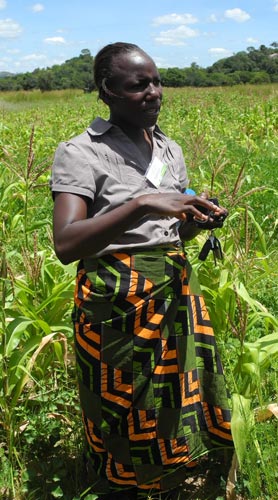
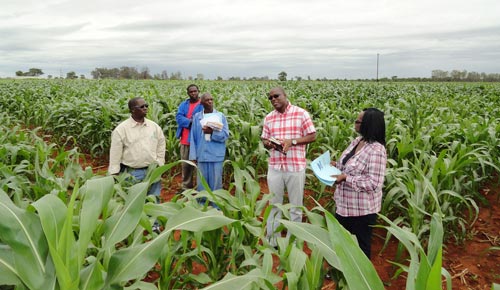
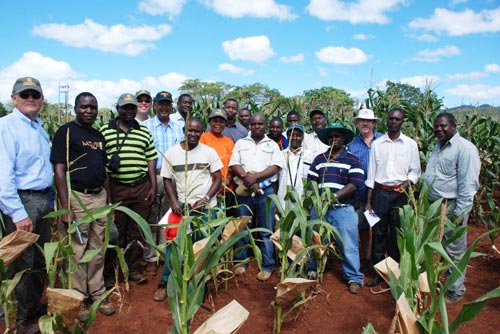 Covering 2,400 km, a multinational team toured Drought Tolerant Maize in Africa (
Covering 2,400 km, a multinational team toured Drought Tolerant Maize in Africa (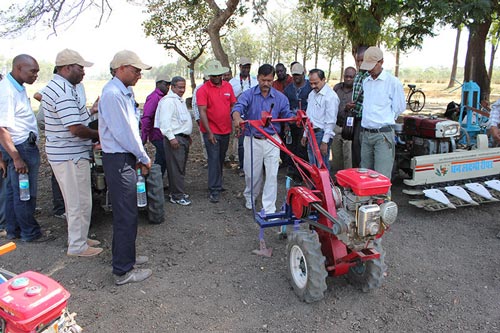 From 29 April to 10 May, 16 agricultural engineers, agronomists, machinery importers, and machinery manufacturers from Ethiopia, Kenya, Tanzania, and Zimbabwe took part in a study tour in India organized by CIMMYT, the Indian Council of Agricultural Research (
From 29 April to 10 May, 16 agricultural engineers, agronomists, machinery importers, and machinery manufacturers from Ethiopia, Kenya, Tanzania, and Zimbabwe took part in a study tour in India organized by CIMMYT, the Indian Council of Agricultural Research (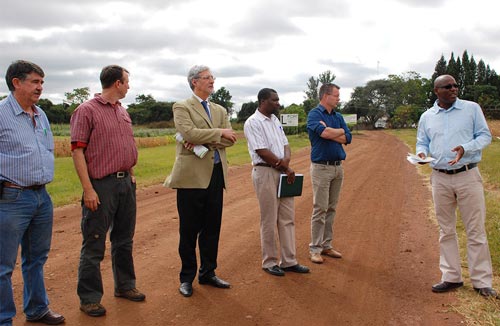
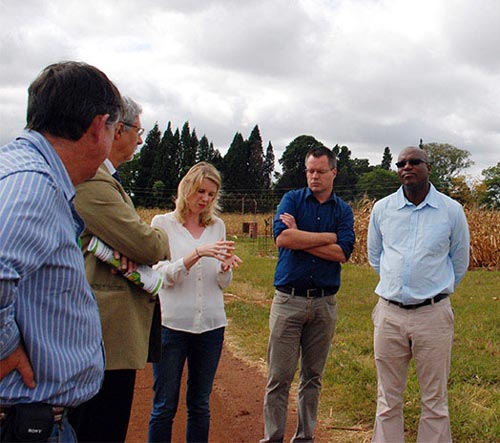
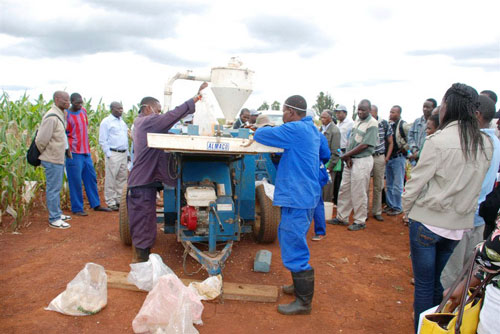 The field day was followed by a feedback session and a technical seminar on the maize lethal necrosis (MLN) disease that has emerged recently in East Africa. During the seminar presented by Magorokosho and MacRobert, principal director of the Department of Agriculture Research Services Danisile Hikwa expressed her appreciation to CIMMYT for its efforts to develop MLN resistant varieties.
The field day was followed by a feedback session and a technical seminar on the maize lethal necrosis (MLN) disease that has emerged recently in East Africa. During the seminar presented by Magorokosho and MacRobert, principal director of the Department of Agriculture Research Services Danisile Hikwa expressed her appreciation to CIMMYT for its efforts to develop MLN resistant varieties.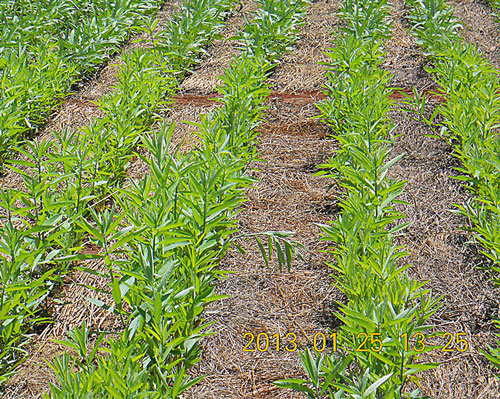 In 2012, three CG centers—the International Livestock Research Institute (
In 2012, three CG centers—the International Livestock Research Institute (